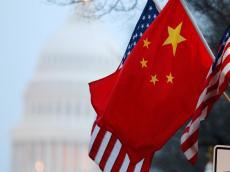|
|
TODAY.AZ / World news
China intends to start trade negotiations with United States
03 February 2025 [23:18] - TODAY.AZ

By Alimat Aliyeva
China intends to begin trade policy negotiations with the United States, based on agreements made with the first administration of U.S. President Donald Trump in 2020, Azernews reports.
According to sources, in order to avoid a full-scale trade war, China aims to return to the "Phase One" agreements reached during Trump’s first term, which included commitments to increase imports from the United States by $200 billion. Beijing plans to negotiate within the framework of the World Trade Organization (WTO) and is also looking to boost investments in the U.S. economy, particularly in electric vehicle battery production. Furthermore, China intends to abandon the artificial depreciation of the yuan, as reported by the Wall Street Journal (WSJ).
Earlier, the Ministry of Commerce of the People's Republic of China stated that it would file a complaint with the WTO over the U.S.'s imposition of tariffs on Chinese goods. The ministry also expressed hope that the United States would "objectively and rationally address its internal issues, rather than threatening other countries with tariffs."
Trump signed an executive order imposing tariffs on goods from Canada, China, and Mexico. According to the order, duties of 25% were placed on imports from Mexico and Canada, with 10% tariffs specifically on Canadian energy resources. In addition, a 10% tariff was imposed on goods from China. Together, Canada, China, and Mexico represent about a third of all goods and services imported by the United States. In 2023, the combined exports from these three countries to the U.S. amounted to nearly $1.5 trillion.
This trade shift highlights the ongoing complexity of U.S.-China relations and the broader international trade landscape. As both nations navigate the fallout from the trade war and look for ways to stabilize their economic interactions, the outcome of these negotiations could significantly influence global markets and international trade dynamics in the coming years. Interestingly, this also underscores the importance of multilateral forums like the WTO, where both sides may seek common ground amidst the growing challenges of global supply chains and shifting economic power.
URL: http://www.today.az/news/regions/256782.html
 Print version
Print version
Connect with us. Get latest news and updates.
See Also
- 15 June 2025 [09:00]
4 key structures damaged at Iran's Esfahan nuclear site after Israeli strike, IAEA confirms - 15 June 2025 [08:00]
Two US Democratic politicians shot in reportedly ‘targeted’ attack - 13 June 2025 [21:23]
Tesla begins testing self-driving cars in Rome - 13 June 2025 [20:21]
Snapchat unveils new features for content creators in latest update - 13 June 2025 [19:20]
PM Shehbaz orders support for Pakistani pilgrims amid Iran tensions - 13 June 2025 [15:13]
Iranian president vows strong response to Israeli strike, warns of consequences - 13 June 2025 [14:09]
Iran vows retaliation as Israel launches massive overnight airstrikes - 13 June 2025 [10:00]
G7 leaders to issue targeted statements instead of joint declaration - 13 June 2025 [09:00]
HD Hyundai heavy industries launches new patrol vessel for Philippine Navy - 13 June 2025 [08:10]
UN General Assembly adopts ceasefire resolution on Gaza with overwhelming support
Most Popular
 European double standards and their cost to peace in the South Caucasus
European double standards and their cost to peace in the South Caucasus
 President Erdo?an announces record-breaking export of national combat aircraft to Indonesia
President Erdo?an announces record-breaking export of national combat aircraft to Indonesia
 PM Shehbaz orders support for Pakistani pilgrims amid Iran tensions
PM Shehbaz orders support for Pakistani pilgrims amid Iran tensions
 Israel "forgot" about France and gave up on Macron
Israel "forgot" about France and gave up on Macron
 Azerbaijan refutes false claims of military activity near Iran border
Azerbaijan refutes false claims of military activity near Iran border
 Azerbaijani FM advises citizens to avoid non-essential travel to Israel amid regional tensions
Azerbaijani FM advises citizens to avoid non-essential travel to Israel amid regional tensions
 Apple reveals exciting new iOS features at WWDC 2025
Apple reveals exciting new iOS features at WWDC 2025
